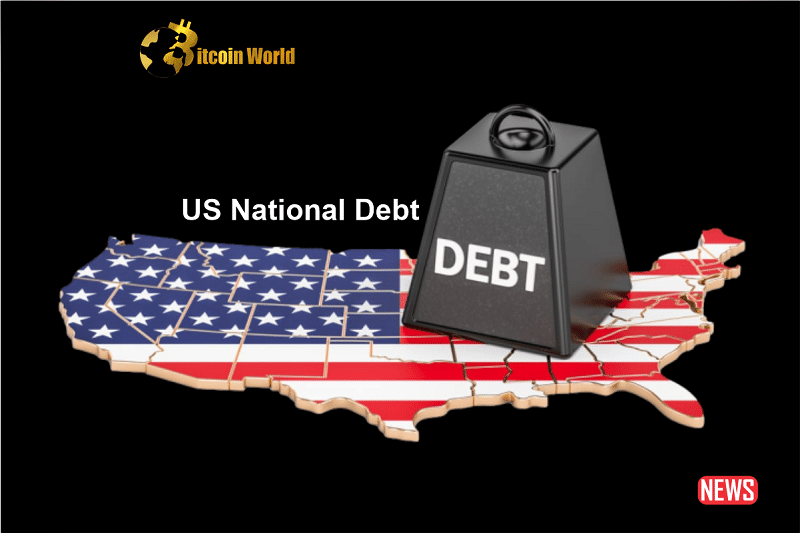Hold on to your hats, folks! The US national debt has just hit another eye-watering milestone. We’re talking about a staggering $32.759 trillion, and it’s climbing faster than ever. Just between August 16th and 22nd, a whopping $97.7 billion was added to the tab, according to the Treasury’s FiscalData portal. That’s a lot of zeros to wrap your head around, isn’t it?
Two Decades of Spending: Where Did All the Money Go?
Renowned financial expert Larry Mcdonald, a familiar face on CNBC and author of a popular book, recently shed some light on this spending spree. He calls it a “jaw-dropping” binge over the past two decades. Get this: since 2020 alone, the US government has reportedly spent an astounding $25 TRILLION. To put that into perspective, imagine the entire S&P 500 – that’s the 500 biggest companies in the US – its total value is around $37 trillion. So, we’ve spent an amount equal to roughly 68% of that massive market cap in just the last few years. Think about that for a moment.
The Specter of ‘Financial Repression’: What Is It?
Mcdonald doesn’t mince words. He predicts impending “financial repression.” Sounds a bit scary, right? Essentially, he’s talking about the Federal Reserve deliberately trying to keep the returns on your savings lower than the rate of inflation. Why would they do that? Well, it’s a way to subtly chip away at the debt without having to raise taxes explicitly – a move that’s often politically unpopular.
The Fed’s Tightrope Walk: Can They Pull It Off?
So, if big tax hikes and spending cuts are unlikely – and Mcdonald thinks they are – what’s the alternative? According to him, the Federal Reserve is walking a tightrope. They’re playing the long game, employing a strategy of financial repression as an indirect way to gradually reduce the debt-to-GDP ratio to a more sustainable level.
Let’s break down the Fed’s delicate balancing act:
- Primary Goal: Keep inflation higher than the average interest rate on the US government’s debt. This effectively makes the debt cheaper over time in real terms.
- Secondary (But Crucial) Challenge: Avoid sparking hyperinflation. This is why they’re taking a slow and steady approach.
- Time Horizon: Mcdonald suggests this isn’t a quick fix, but more like a 15-year project.
What Does This Mean for You?
This complex situation has real-world implications. While financial repression might help manage the national debt over the long term, it could also mean lower returns on your savings and investments in the meantime. It’s a delicate balancing act with potential trade-offs.
The Road Ahead: Navigating a Changing Economic Landscape
The US national debt reaching these historic heights throws a spotlight on the intricacies of financial repression. Larry Mcdonald’s insightful analysis highlights the Federal Reserve’s cautious approach as they navigate the challenging terrain between managing the massive debt and avoiding the dangers of runaway inflation. The next decade and a half promise to be a period of significant financial maneuvering as the nation seeks to balance economic growth with the imperative of fiscal responsibility.
It’s a complex picture, but understanding the forces at play is crucial for navigating the economic landscape ahead. Keep an eye on these developments – they’ll likely shape your financial future.
Disclaimer: The information provided is not trading advice, Bitcoinworld.co.in holds no liability for any investments made based on the information provided on this page. We strongly recommend independent research and/or consultation with a qualified professional before making any investment decisions.


